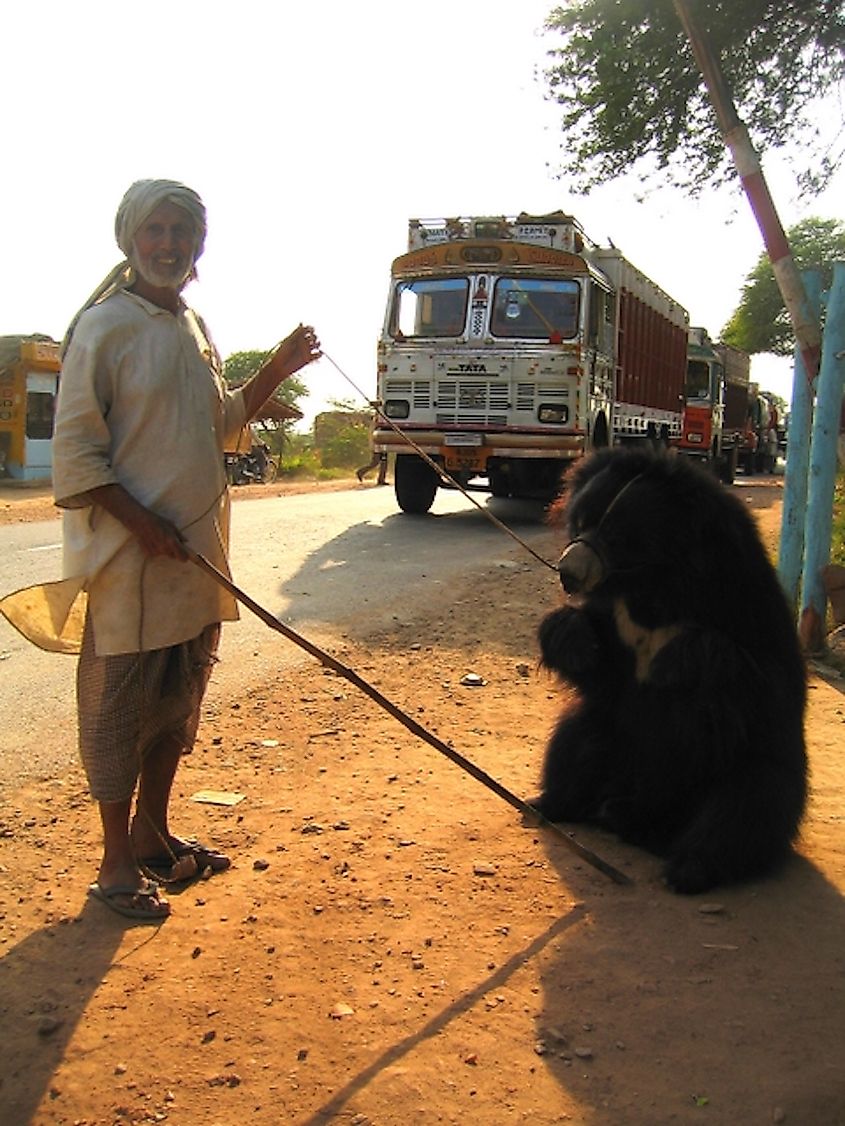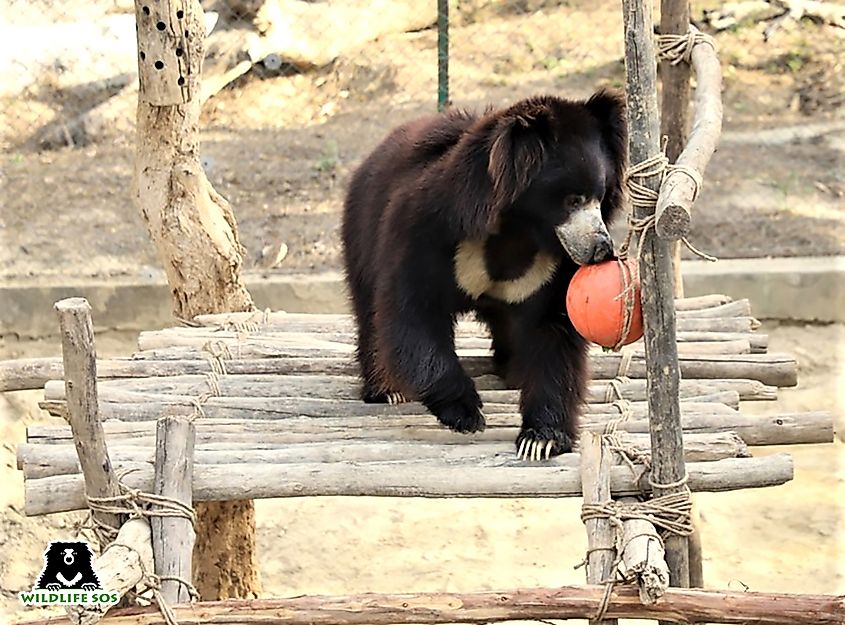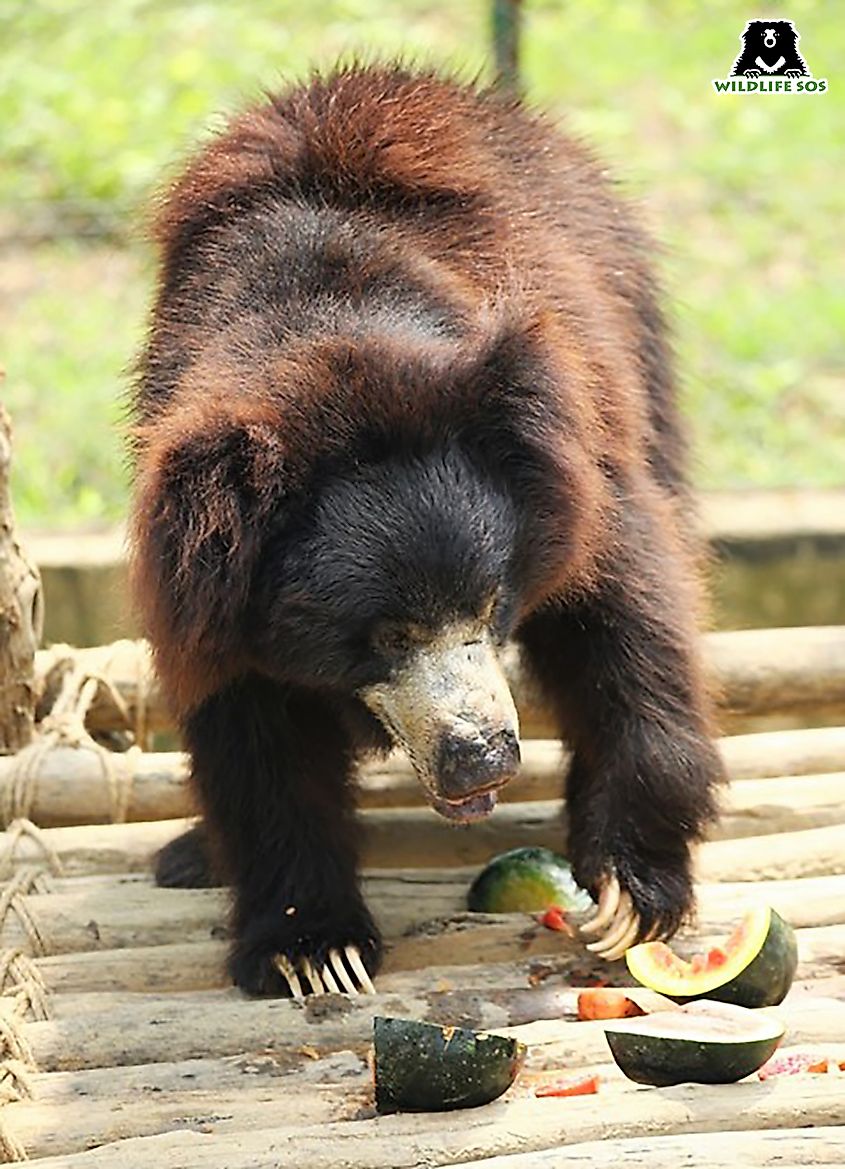Rangila, The Dancing Bear's Happy Story Is A Landmark Victory For Animal Rights

For ages, humans have exploited the non-humans for a variety of needs including entertainment. They have encaged animals in zoos to watch them, made them perform unnatural acts to entertain spectators in circuses, trained them for animal joyrides, and even made them dance on the streets for a visual treat. Without a voice and representation in the vote bank, the animals have always surrendered to human whims and fancies. Rangila, a male sloth bear, would have also suffered the same fate if not rescued in time by WildlifeSOS.
Dancing To The Tune Of Humans
In December 2017, two sloth bears, a male and a female, were illegally trafficked to Nepal from India to be exploited as dancing bears in the country. Luckily, enforcement authorities in Nepal seized the bears before they could reach the destined location where they would be sold as dancing bears.
But, what actually are dancing bears?
For over four centuries, the sloth bear has been used as an entertainment source for people. In the Indian subcontinent, a nomadic tribe called the Kalandars first started the practice of making sloth bears dance. Initially, the show was limited to the courts of the Mughal kings who ruled the region. Later, as the kingdoms in the region dissolved, the sloth bear dance shows transitioned to cheap roadside entertainment. The Kalandars would move with their bears from place to place and host bear dancing shows on the streets to attract the public eye. Those happy with watching the shows would then pay money to the bear owners.
But behind all these "happy bear dancing shows" there was a dark and cruel secret. The bears used for the purpose were usually obtained as cubs from poachers who would kill their protective mothers in the wild. Once sold, the bear cubs would go through a process whose brutality level cannot be described in words. Their muzzles would be pierced through a pain-inflicting procedure and a rope strung through this piercing to be tugged to make them dance to human will. From then on, the fate of these bears would be hanging on these ropes forever.

Fortunately, the practice of using bears to dance was made illegal in India in the 1970s with the passing of the Wildlife Protection Act 1972. Yet, the bears continued to be illegally used for the purpose as those practicing the trade had no alternative sources of income. In the later years, a lot of work was done by organizations like Wildlife SOS to rescue these bears and rehabilitate them in safe shelters as well as provide alternative livelihood options to the Kalandars so that they could finally give up their traditional occupation.
Today, the cases of bears used for dancing have greatly reduced but not eliminated. Other threats to these bears have also surfaced with greater intensity in recent years as mentioned by Kartick Satyanarayan, CEO & Co-founder of Wildlife SOS:
"The sloth bear population in India depicts a declining trend. Despite continuous efforts, cross border trafficking of ‘Dancing Bears’ and demand for body parts for use in Traditional Chinese medicine, bear paw soup and bear bile still exists. Poaching, habitat fragmentation, and human-wildlife conflict are also serious threats to the sloth bears,” he said.
Rangila's Rescue Story

Following the rescue of the two sloth bears from traffickers by the Nepalese authorities at the Indo-Nepal border, they were shifted to the Kathmandu Zoo in Nepal for temporary residence. They were named Rangila (male bear) and Sridevi (female bear).
Sadly, the joy of rescuing these bears was short-lived when the female bear, Sridevi, succumbed to the trauma and died. Rangila, however, survived and was successfully brought back to his birthplace, India, in 2018. WildlifeSOS collaborated with the Jane Goodall Institute in Nepal to execute this repatriation process. It took months of international negotiation and stressful calibration to achieve victory.
Once in India, Rangila was sent to Wildlife SOS Agra Bear Rescue Facility in India for lifetime care and treatment. It is the world's largest sloth bear rehabilitation center. It houses nearly 200 bears and is run by Wildlife SOS in collaboration with Uttar Pradesh Forest Department. The center is well-equipped with state-of-the-art facilities to carry specialized veterinary treatment as well as geriatric care for bears.
Rangila's Happily Ever After

On July 11, 2020, 21-year old Rangila celebrated two years of his new-found freedom at the Agra Bear Rescue Facility. Staff working there adore Rangila. He is known for his growing fondness for the various enrichments provided to him to ensure his physical and mental well-being. He now explores the outdoors without being tied to a rope, plays with honey-laced logs and treat-filled enrichment balls, and naps in mud pits dug up by him!
“It’s been two years since Ranglia’s rescue and he has grown stronger and healthier with the constant care of staff and veterinarians," said Kartick Satyanarayan.

Dr. S Ilayaraja, Wildlife SOS Deputy Director, Veterinary Services said: “Rangila was weak and undernourished when he first arrived at the center. It took months of specialized care and treatment to restore his strength. However, Rangila still exhibits signs of psychological stress and trauma that will take much longer to heal.”
Geeta Seshamani, Secretary & co-founder Wildlife SOS said: “Rangila spends most of his time playing on the enrichment structures and it fills our hearts with absolute joy watching him simply be a bear again!”











